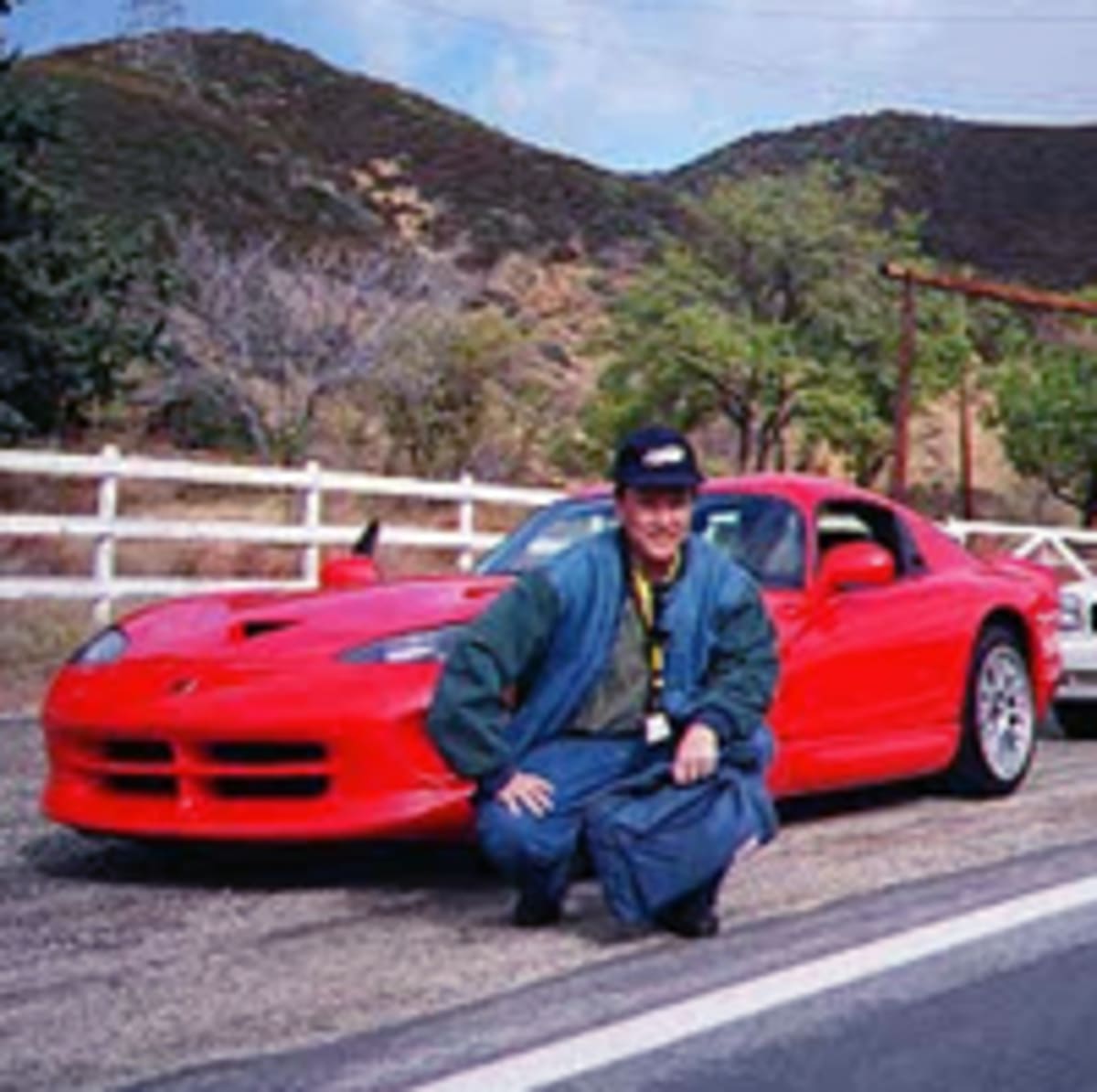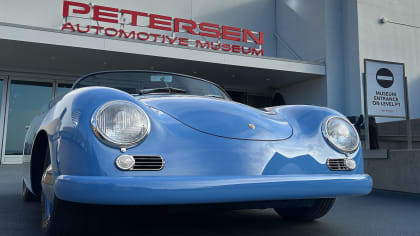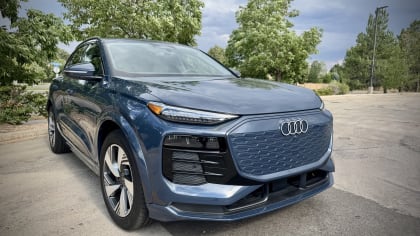THE LA CAR BLOG - SEPTEMBER 2005
This article is from our archives and has not been updated and integrated with our "new" site yet... Even so, it's still awesome - so keep reading!
Published on Thu, Sep 1, 2005
By: The LACar Editorial Staff
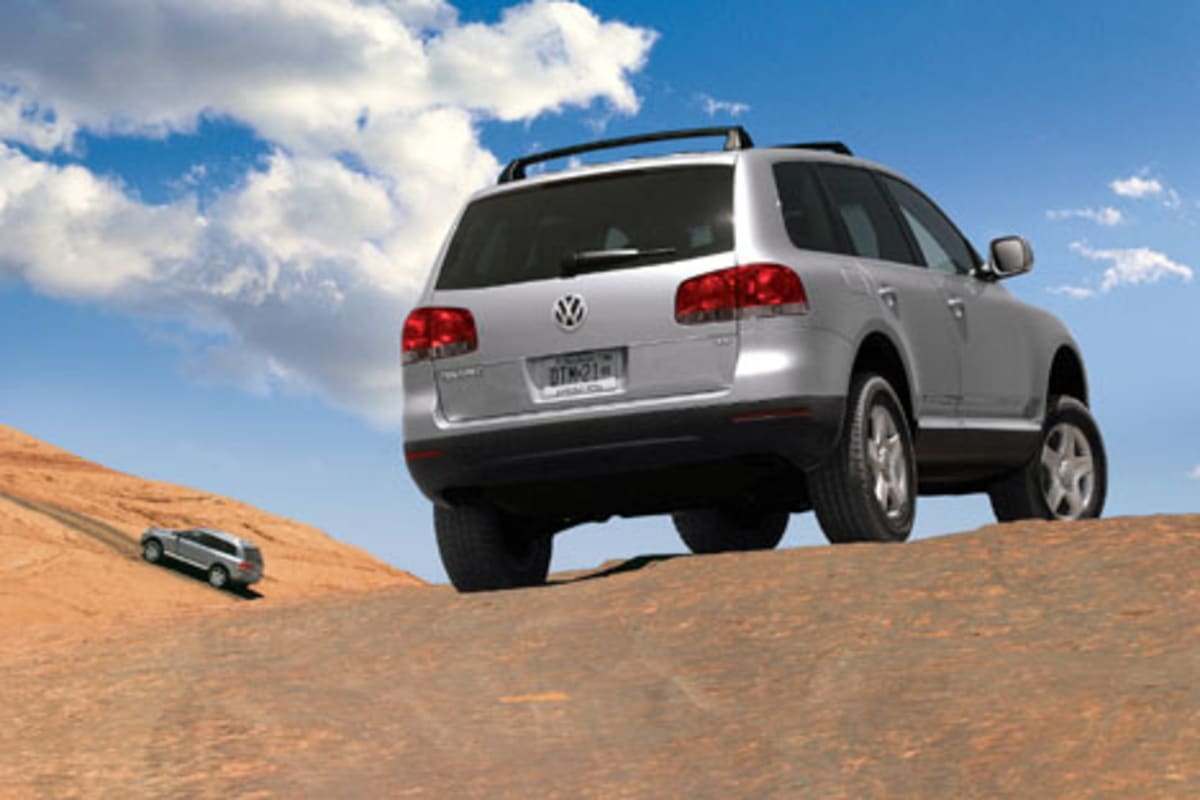
VW's Touareg was part of a VW-Porsche
venture.
LA
CAR BLOG
BLOOD IS THICKER
THAN WATER
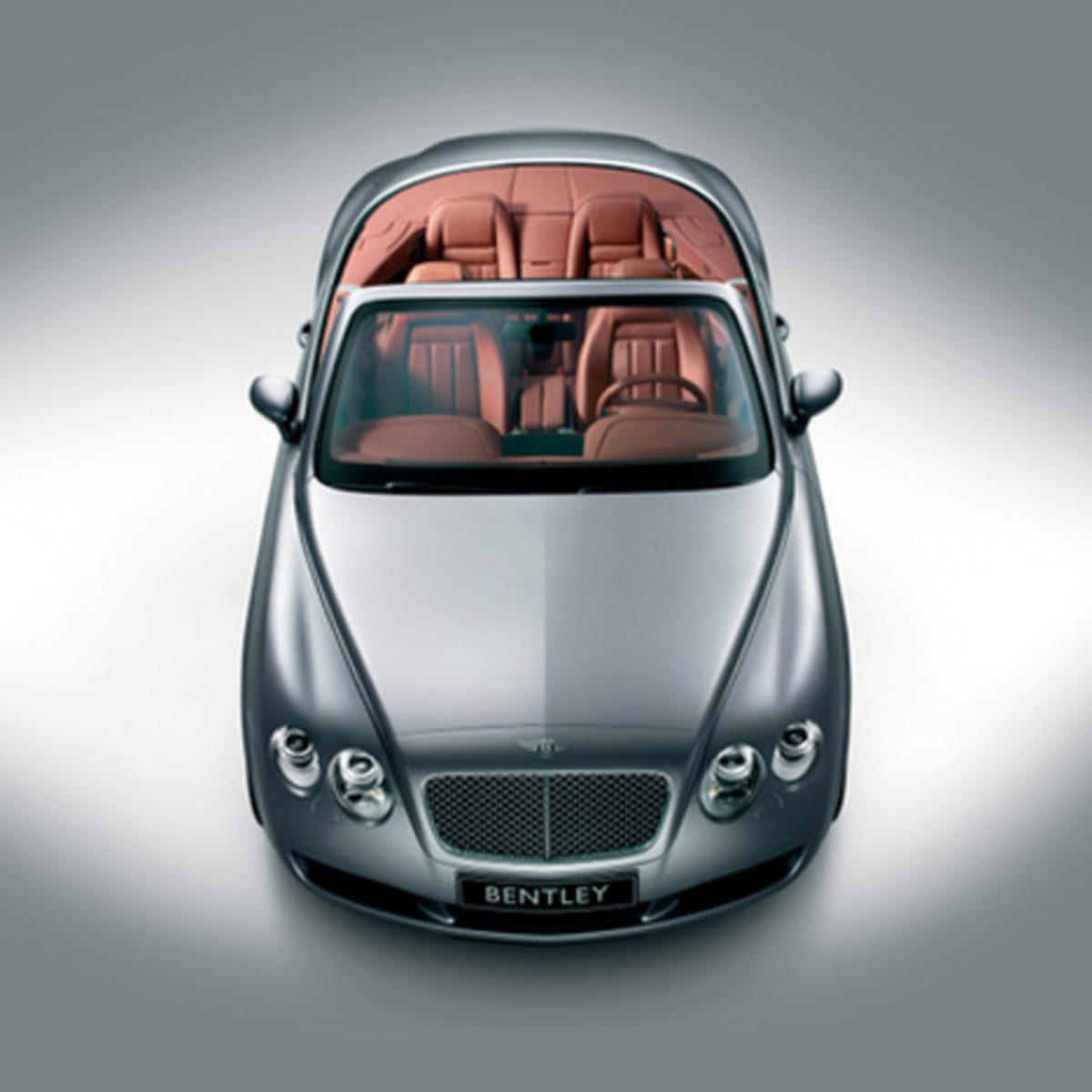
BENTLEY'S
STUNNING NEW CONTINENTAL GT CREWE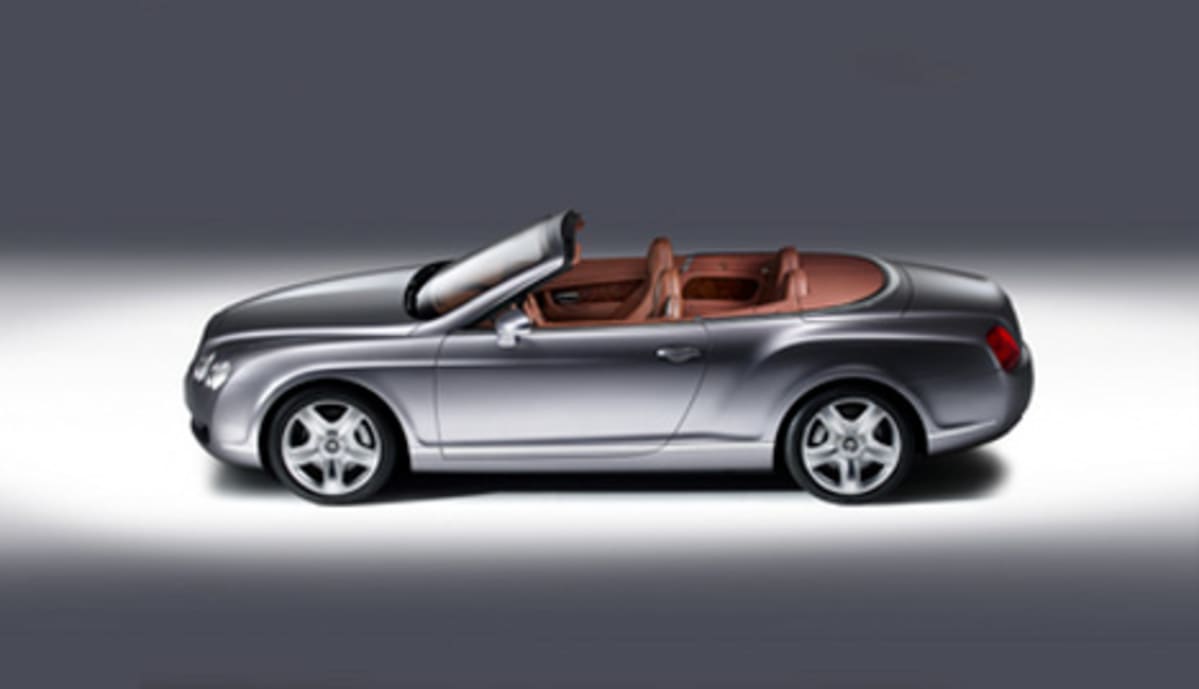
While sharing the familiar face of the Continental family, the design personality of the new Continental GTC is
explained by Bentley's design director, Dirk van Braeckel: "With the Continental GTC we set out to achieve a style that is both contemporary and elegant but with the sporting stance of a true performance car. We also wanted to ensure that the Continental GTC looks just as beautiful with the roof up as it does when it's down.
"In keeping with the Bentley tradition, the new Continental GTC has a soft fabric roof and heated glass rear screen. When stowed below its hide-covered tonneau, efficient packaging ensures excellent space for both rear passengers and their luggage."
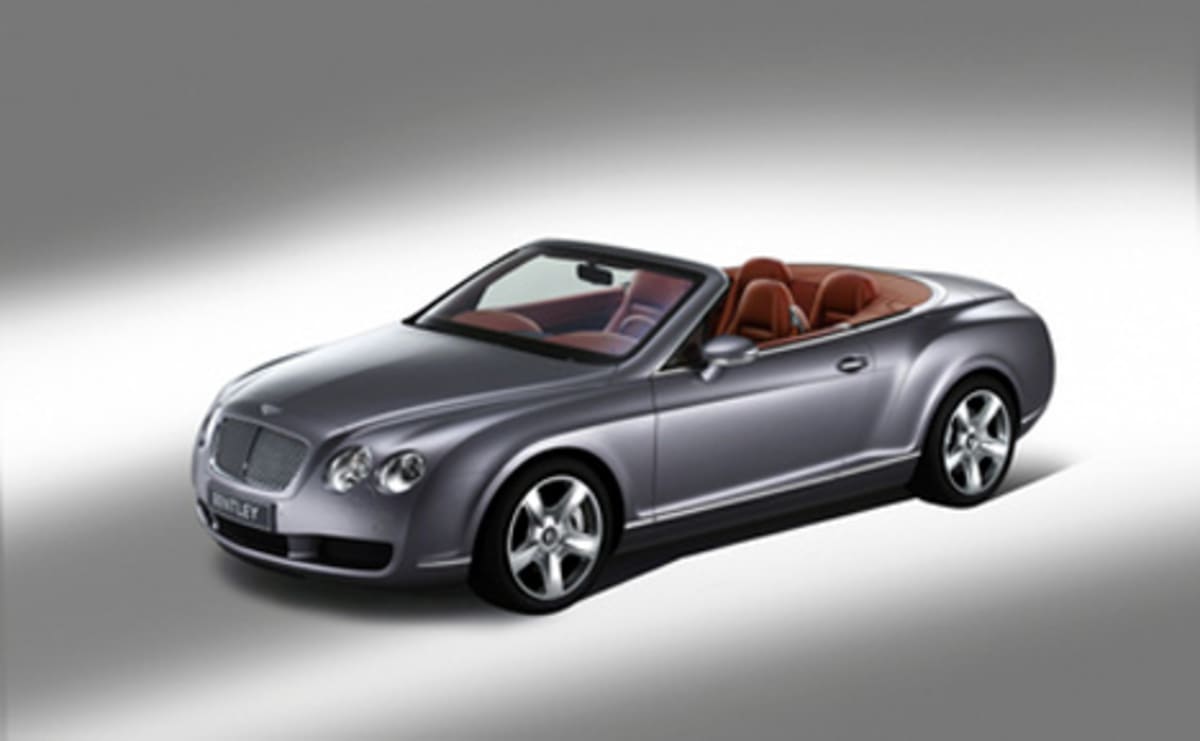
The Continental GTC becomes the second convertible to grace the current Bentley range. It follows the recently announced return of the evocative Azure name for Bentley's Arnage-derived flagship four-seater convertible which goes on sale in Spring 2006. Further details, including full technical specification, market availability and pricing will be released nearer to the Continental GTC's on-sale date. Your LA Car Blog comments can be sent to : Letter to the Editor.

Kia Amati tops JD Power survey
for premium midsize cars
KIA JOINS LEXUS,
ET AL AT THE TOP OF JD POWERS SURVEY
Your LA Car Blog comments can be sent to : Letter to the Editor.
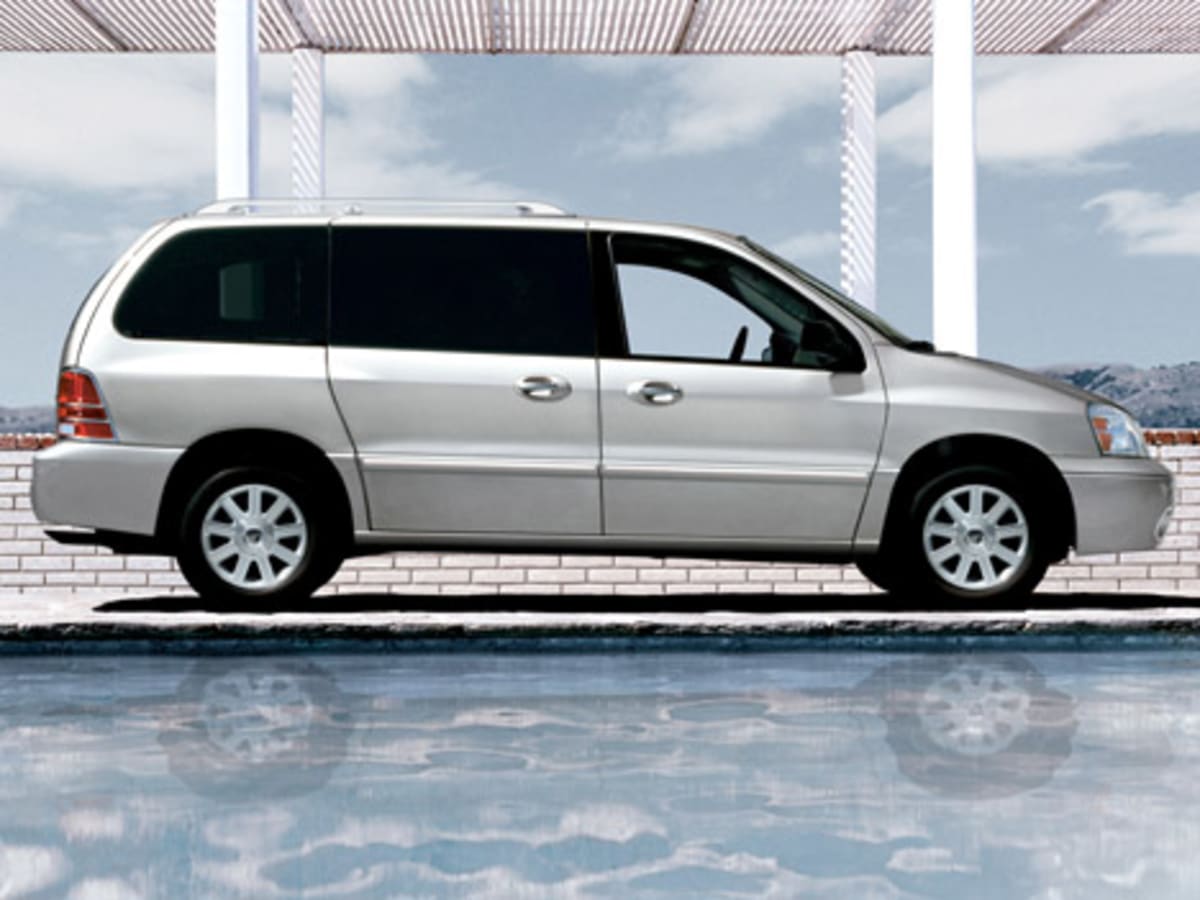
Mercury's new Monterey earns good ratings.
MANY MINIVANS
FARE POORLY IN IIHS REAR COLLISION TESTS
The ratings are for seat/head restraint designs available in 14 current minivan models. Starting points for the ratings are measurements of head restraint geometry - the height of a restraint and its horizontal distance behind the back of the head of an average-size man. Seats with good or acceptable restraint geometry then are tested dynamically using a dummy that measures forces on the neck. This test simulates a collision in which a stationary vehicle is struck in the rear at 20 mph. Seats without good or acceptable geometry are rated poor overall because they cannot be positioned to protect many people.
Among the seat/head restraints that were tested dynamically, those in the Honda Odyssey are rated marginal overall. All seats in the Chevrolet Uplander (also sold as Buick Terazza, Pontiac Montana SV6, and Saturn Relay) and some in the Grand Caravan/Town & Country and Toyota Sienna are rated poor. These ratings are in addition to the good overall rating for the seats in the Freestar/Monterey and the acceptable rating for the seats in some Grand Caravan/Town & Country models. All of these seat/head restraint combinations earn overall ratings based on both geometry and dynamic test results.
Another minivan, the Kia Sedona, has been redesigned for the 2006 model year but isn't yet available. Results for the Sedona will be released early next year.
"Automakers are improving the geometry of their head restraints, compared with the last time we evaluated them," says Institute chief operating officer Adrian Lund. "Still, in this group of minivans the Fords are the only models with good dynamic performance for all of their seat designs. Many of the seat/head restraints we evaluated didn't even get to the testing stage because of marginal or poor geometry. These cannot begin to protect most people in rear-end crashes."
Some seats automatically earn poor ratings: The Institute doesn't test seats with head restraints that are rated marginal or poor for geometry because such seats cannot be positioned to protect many taller people. The seats that weren't tested in this group include all of those in the Chevrolet Astro, GMC Safari, Mazda MPV, and Nissan Quest plus some seats in the Grand Caravan and Toyota Sienna.
"It's disappointing that so many minivan seats are rated poor for rear impact protection," Lund says. "Drivers of minivans spend a lot of time on urban and suburban roads where rear-end collisions are common in stop-and-go traffic. Moms often are behind the wheel, and women are more vulnerable to whiplash injuries so they especially need good seats and head restraints."
Neck injuries are the most common kind reported in automobile crashes and are most likely to occur in rear impacts. Whiplash is the most serious injury reported in about 2 million insurance claims each year, which cost at least $8.5 billion. Such injuries aren't life-threatening, but they can be painful and debilitating.
Rear-end crashes are common events in urban and suburban traffic. For example, in one urban Virginia county 63 percent of daytime crashes on urban interstate highways in 2003 were rear impacts.
When a vehicle is struck in the rear and driven forward, the vehicle seats accelerate occupants' torsos forward. Unsupported, their heads will lag behind the forward movement of their torsos. This differential motion causes the neck to bend back and stretch. The higher the torso acceleration the more sudden the motion, the higher the forces on the neck, and the more likely a neck injury is to occur.
"The key to reducing neck injury risk is to keep the head and torso moving together," Lund explains. "To ensure this happens, a seat and head restraint have to work in concert to support the head, accelerating it with the torso as the vehicle is driven forward in a rear impact. This means the geometry of a head restraint has to be adequate, and so do the stiffness characteristics of the vehicle seat and head restraint."
A head restraint should extend at least as high as the top of the ears of the tallest expected occupant. A restraint also should be positioned close to the back of an occupant's head so it can contact the head and support it early in a rear-end crash.
"But good head restraint geometry by itself isn't sufficient," Lund says. "A seat has to be designed so it doesn't move backward and away from the head during a rear impact. A seat also needs to 'give' so an occupant will sink into it, moving the head closer to the restraint."
Sled test simulates rear-end collision: Overall seat/head restraint ratings are based on a two-step evaluation. In the first step restraint geometry is rated using measurements of height and distance from the back of the head of a test dummy that represents an average-size man. Seats with good or acceptable geometric ratings are subjected to a dynamic test conducted on a crash simulation sled that replicates the forces in a stationary vehicle that's rear-ended by another vehicle of the same weight going 20 mph.
A dummy specially designed to assess rear-end crash protection (BioRID) is used to show how a human would respond and measure the forces on the neck during simulated crashes. The sled is a movable platform that runs on fixed rails and can be programmed to re-create the accelerations that occur inside vehicles during real-world crashes.
"The sled test simulates the kind of crash that frequently occurs when one vehicle rear ends another in commuter traffic," Lund says. "People think of head restraints as head rests, but they're not. They're important safety devices. You're more likely to need the protection of a good head restraint in a collision than you are to need other safety devices because rear-end crashes are so common."
The Institute's dynamic ratings of good, acceptable, marginal, or poor are derived from two seat design parameters (peak acceleration of the dummy's torso and time from impact initiation to head restraint contact with the dummy's head) plus neck tension and shear forces recorded on BioRID during the test. The sooner a restraint contacts the dummy's head and the lower the acceleration of the torso and the forces on the dummy's neck, the better the dynamic rating. A seat/head restraint's dynamic rating is combined with its geometric rating to produce an overall rating
Your LA Car Blog comments can be sent to : Letter to the Editor.
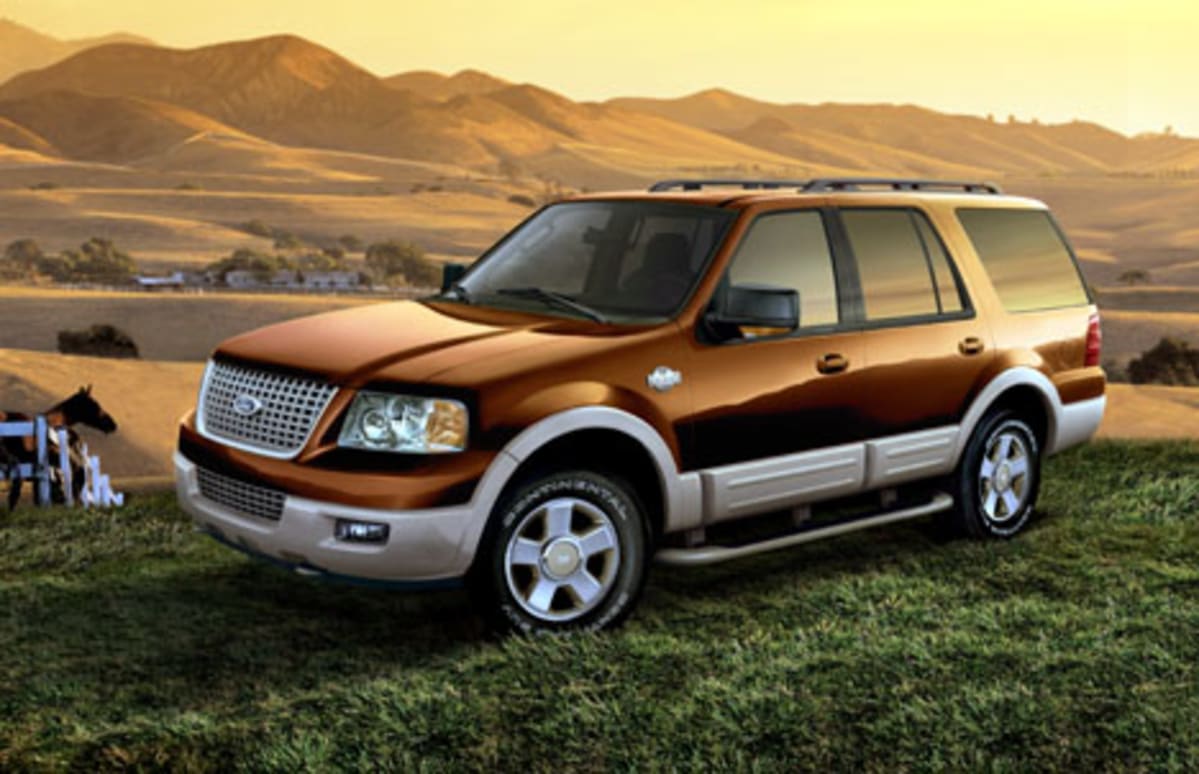
Should SUVs be put out to pasture?
8 IN 10 SAY WE
SHOULD DITCH SUVS TO CUT OIL USE
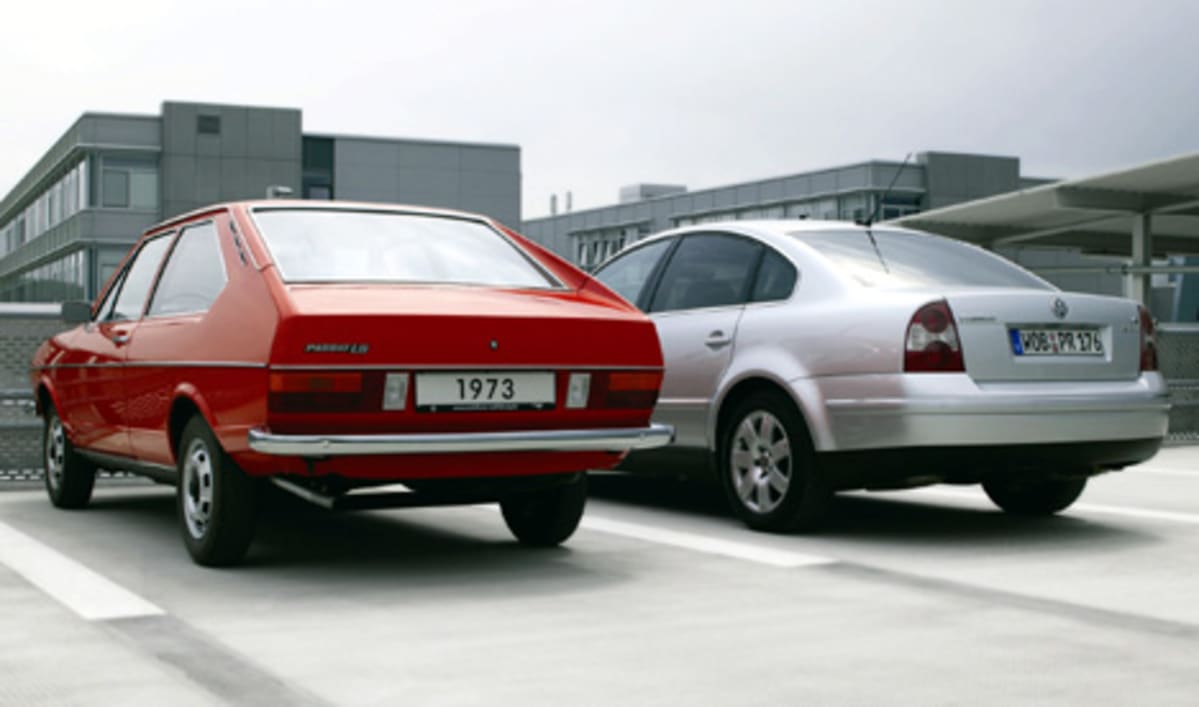
VW Dasher (a.k.a. Passat B1) next to a Passat
B5
WAS THE DASHER
THAT GOOD?
"Here is the pathetic thing," laments Morford. "In 2005, this is considered very good mileage. This is considered efficient and admirable, even though it's not, even though it's far, far from it, even though you look at those numbers and you think, Oh holy hell, we have, in many ways, progressed not at all. We have progressed exactly zero." Morford's point is well-taken. During the past couple of decades, we've actually regressed in fuel efficiency - much of due to America's love affair with the SUV. Perhaps, however, he could have used a better example than his mother's Dasher. Either he was too young at the time, or he's looking at history though rose-colored glasses. That Dasher was one of the most unreliable cars to reach the shores in the 1970s. It was so bad that it swore off thousands of loyal car owners away from VW - owners who were previously spoiled by the reliability of the old Beetle. Today, the Dasher goes by the name Passat. Thankfully, the new one is a whole lot more reliable. And in 45 states, you can still pick up a 2005 TDI model that will get you 40 mpg in a pinch. - Roy Nakano Your LA Car Blog comments can be sent to : Letter to the Editor.
DOUG SAYS GOODBYE
TO IRWINDALE, HELLO TO AUTOBOOKS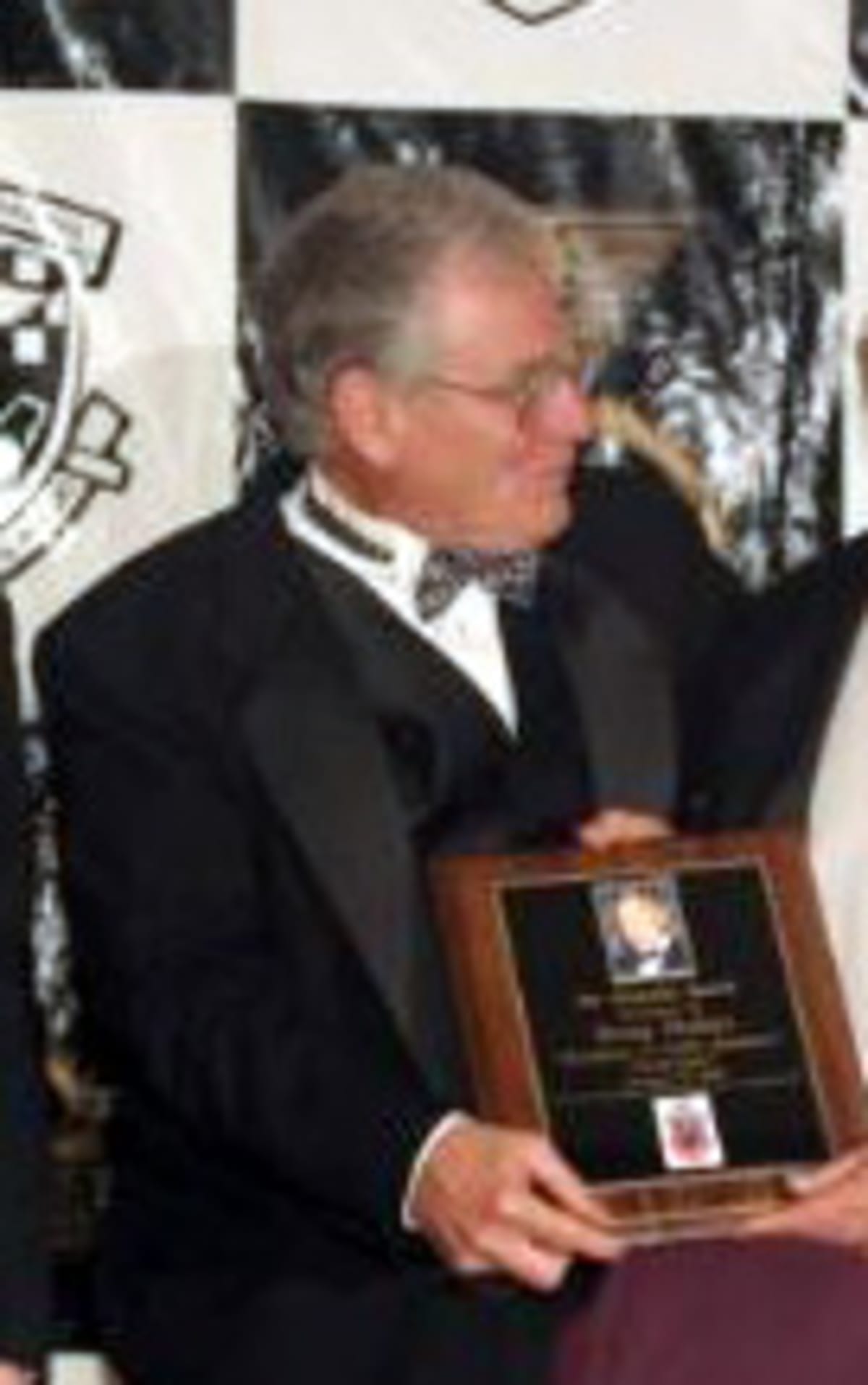
In the world of motorsports, long-time LA Car friend Doug Stokes is known for his role as the award-winning Director of Communications at Irwindale Speedway. Last year, he received the Jim Chapman Award for excellence in motorsports public relations. For eight years, Doug played a key role in making Irwindale Speedway, a one-half mile paved oval near Los Angeles that opened in 1999, into one of the country's best-known short tracks. Today marks Doug's last official day at the Speedway. Tomorrow, Doug joins the staff of Autobooks-Aerobooks bookstore in Burbank, California. "Doug will become that almost legendary establishment's general manager as well as a partner (vice president) in the privately-held company which owns and operates the 54 year-old California motoring landmark," says Irwindale Speedway VP/General Manager Bob DeFazio. "It's been a great eight years at the Speedway," says Stokes. Prior to Irwindale, Stokes worked as a senior PR person on the first Los Angeles (Vintage) Grand Prix. He was also the first PR Manager for Perris Auto Speedway. "I guess that I've been involved in a bit of history too, working for both of Southern California's newest 1/2-mile tracks, but I still really miss Riverside and Ascot. Jerry Titus signed my SCCA road racing license off at Riverside and I actually raced a go-cart at Agoura." Doug will actually be back at Irwindale to help out on the NASCAR Toyota All-Star Showdown and the Thanksgiving Night Grand Prix. "How could I miss those two classics?" Adds Doug, "I want to publicly thank everyone who has worked with me on staff and especially two of the people who put me in such a great job in the first place, Jim Williams and Bob DeFazio. Their vision and hard work have truly given motorsports one of its finest facilities. I also want to take time here to sincerely thank all of my colleagues in the media," he added. Without you, your words, your pictures, and your voices, we never would have had the kind run that we've enjoyed so far at the Speedway." "We feel very lucky to be able to welcome Doug into this operation," says Autobooks store owner Chet Knox. "Doug's been an Autobooks regular since the mid-'sixties, always a fan, and always a keen supporter of this establishment. Now he's coming aboard as a regular part of its management team, and we couldn't be more pleased." "Please, when you're in the LA area, stop by Autobooks-Aerobooks in Burbank and say hello," says Doug. "After over 10 year of working at a racetrack (Perris and Irwindale) I'm going to miss the daily excitement of that business. However, I'm sure that becoming a shopkeeper will have plenty of adventure." Stokes' first official day on the job at Autobooks will be Tuesday, September 20. - Roy Nakano Your LA Car Blog comments can be sent to : Letter to the Editor.
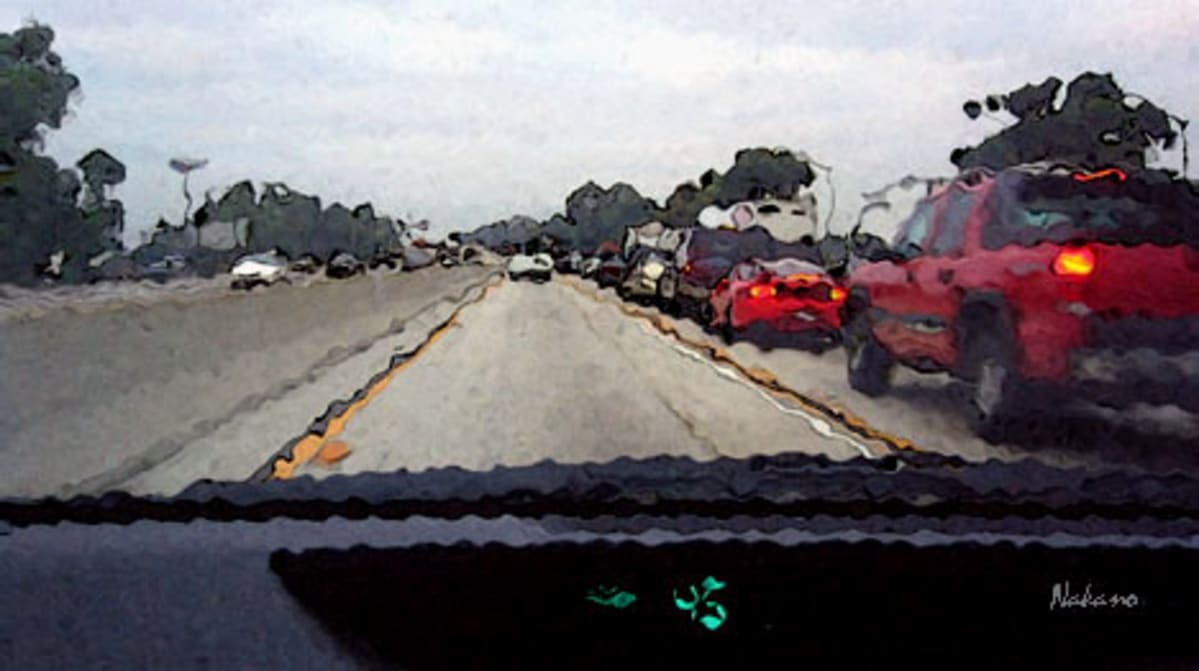
RUSSIAN ROULETTE
IN THE CARPOOL LANE
THE MARKET IS
DELIVERING WHAT CAFE NEVER DID
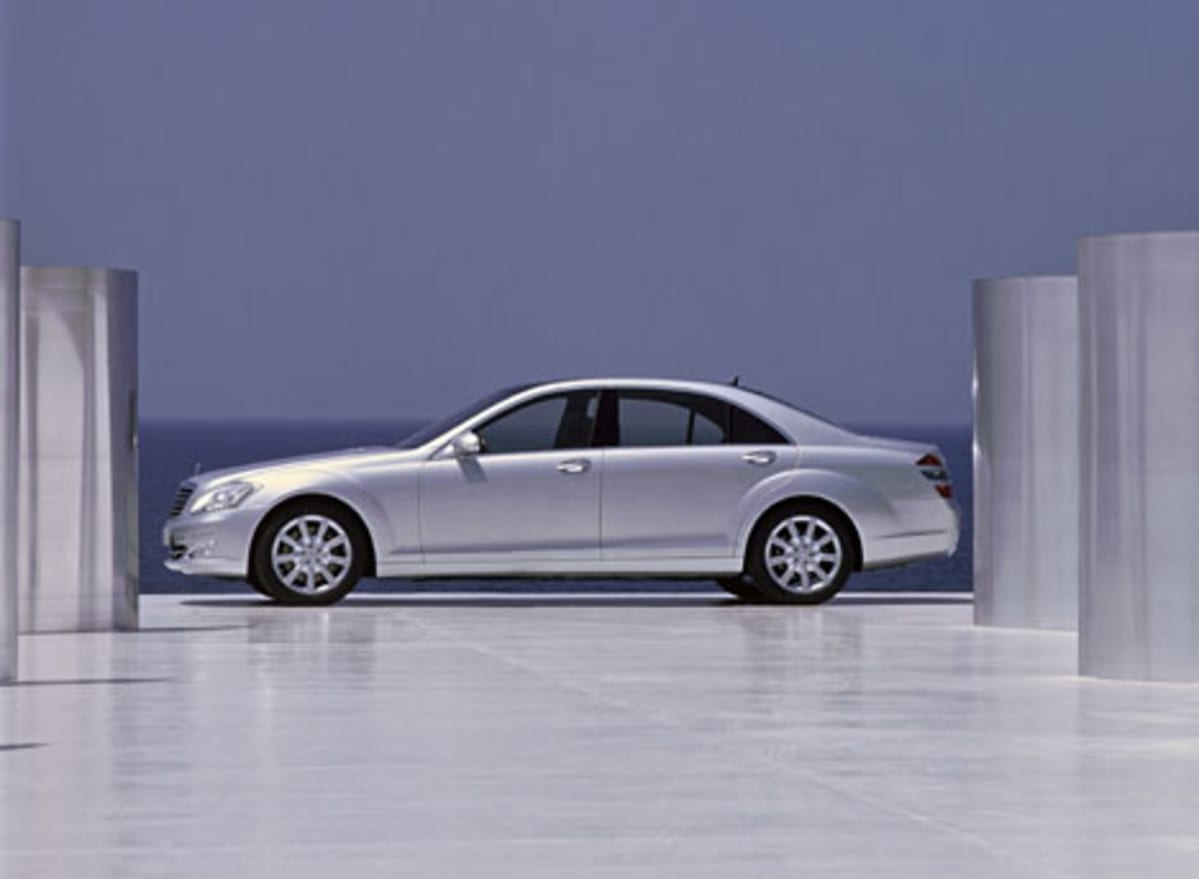
The newest S-Class is tight, but not
tight-fitting.
COURT RULE IN
FAVOR OF FAT MAN OVER PHAT CAR
A
JOURNAL OF LOS ANGELES & ITS CAR CULTURE
That
was LA Car's subtitle when it started back in 1997. Since then, it became
Reporting From Car Culture Ground Zero, then From The Heart of Car
Culture, to today's The Cars and Culture of Southern California. At
all times, however, we aimed to chronicle the Southland's spirit - much like a
journal. Now, the diary goes daily. LA Car has always been a great source
to come back to from month-to-month, to see what articles and reviews have been
added to our rather staggering database. With the LA Car Blog, we give you a reason to
come back more often, since we will post new blog entries virtually
every day or so (well, there will be occasional vacation breaks).
So, go
ahead and bookmark www.lacar.com. We'll be
sure to always provide a link to the latest blog entry. In the meantime, welcome
to the journal and journey into the cars and culture of Southern California.
- Roy Nakano For
past LA Car Blog entries, click the following:
August 2005
July 2005
June 2005
May 2005
April 2005
March 2005
February 2005
January 2005
December 2004
November 2004
October 2004
September 2004
August 2004
July 2004
June 2004
May 2004
April 2004
